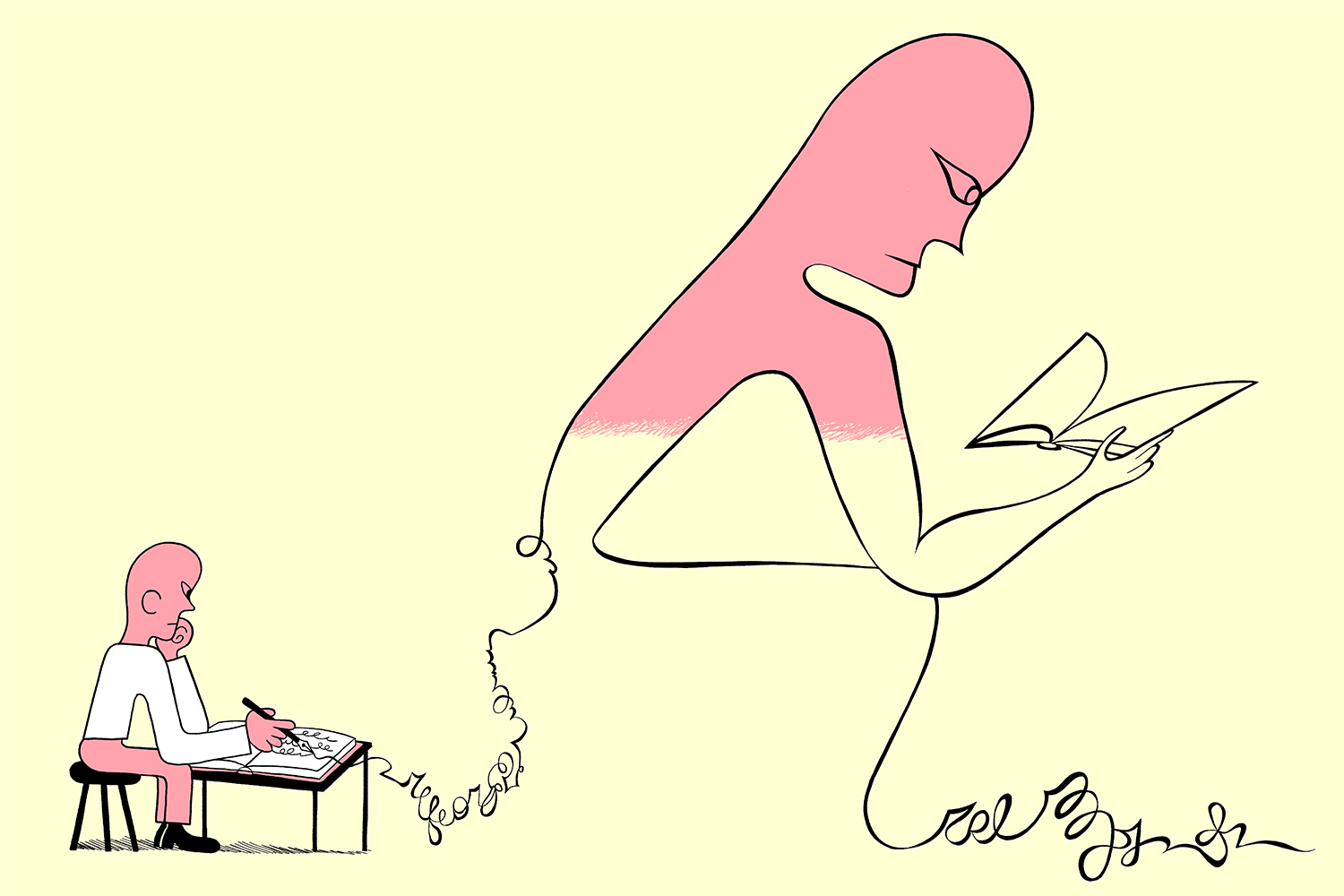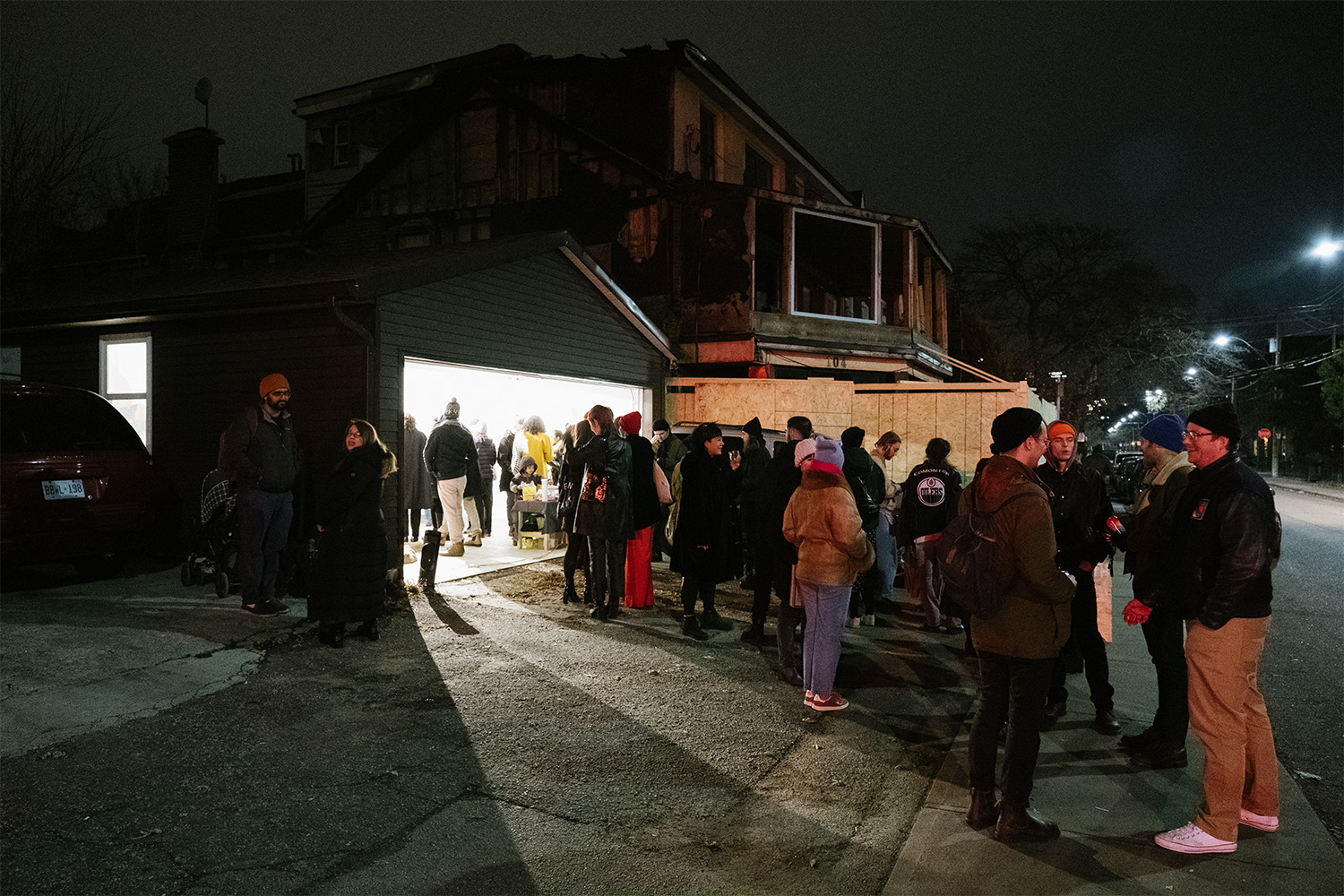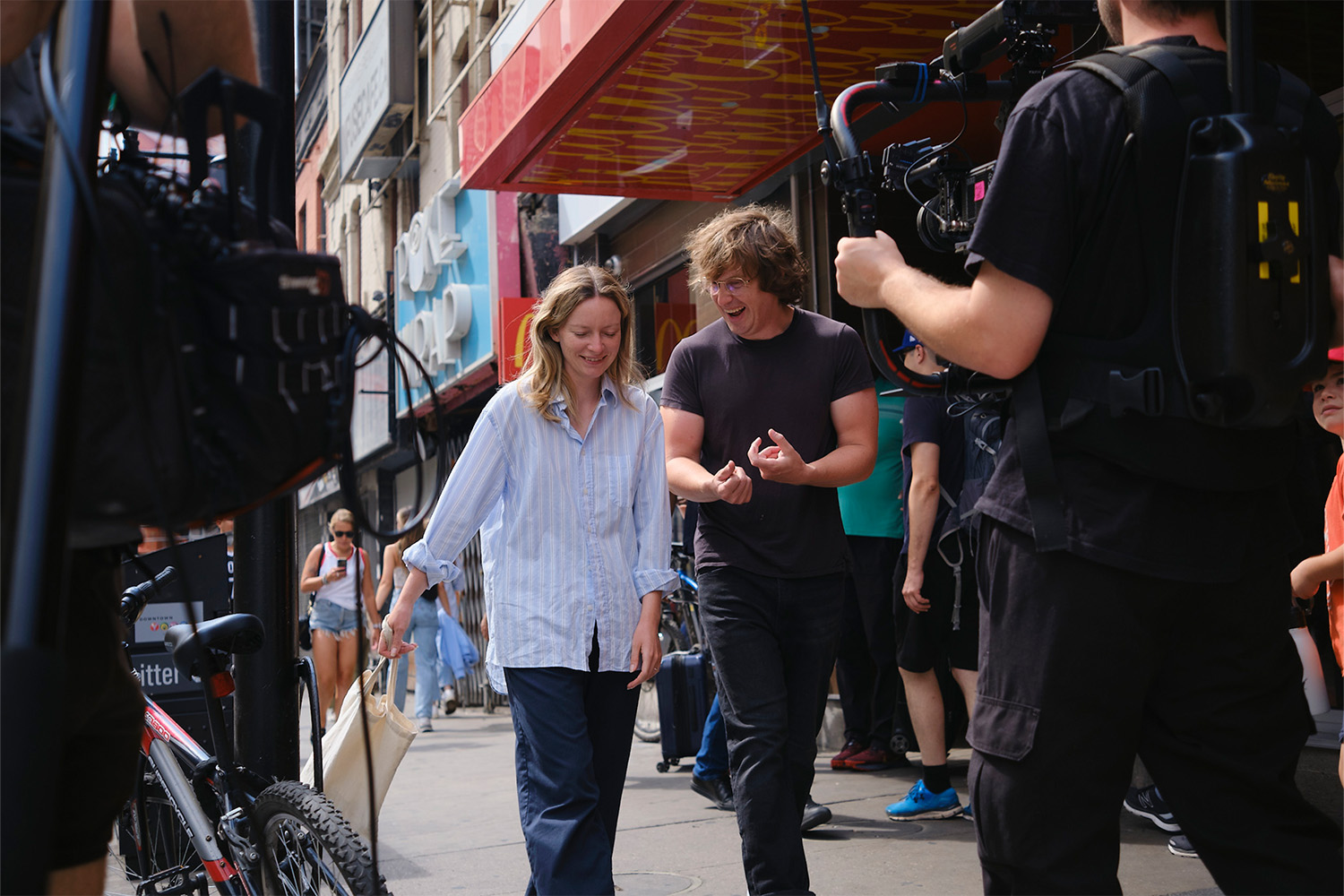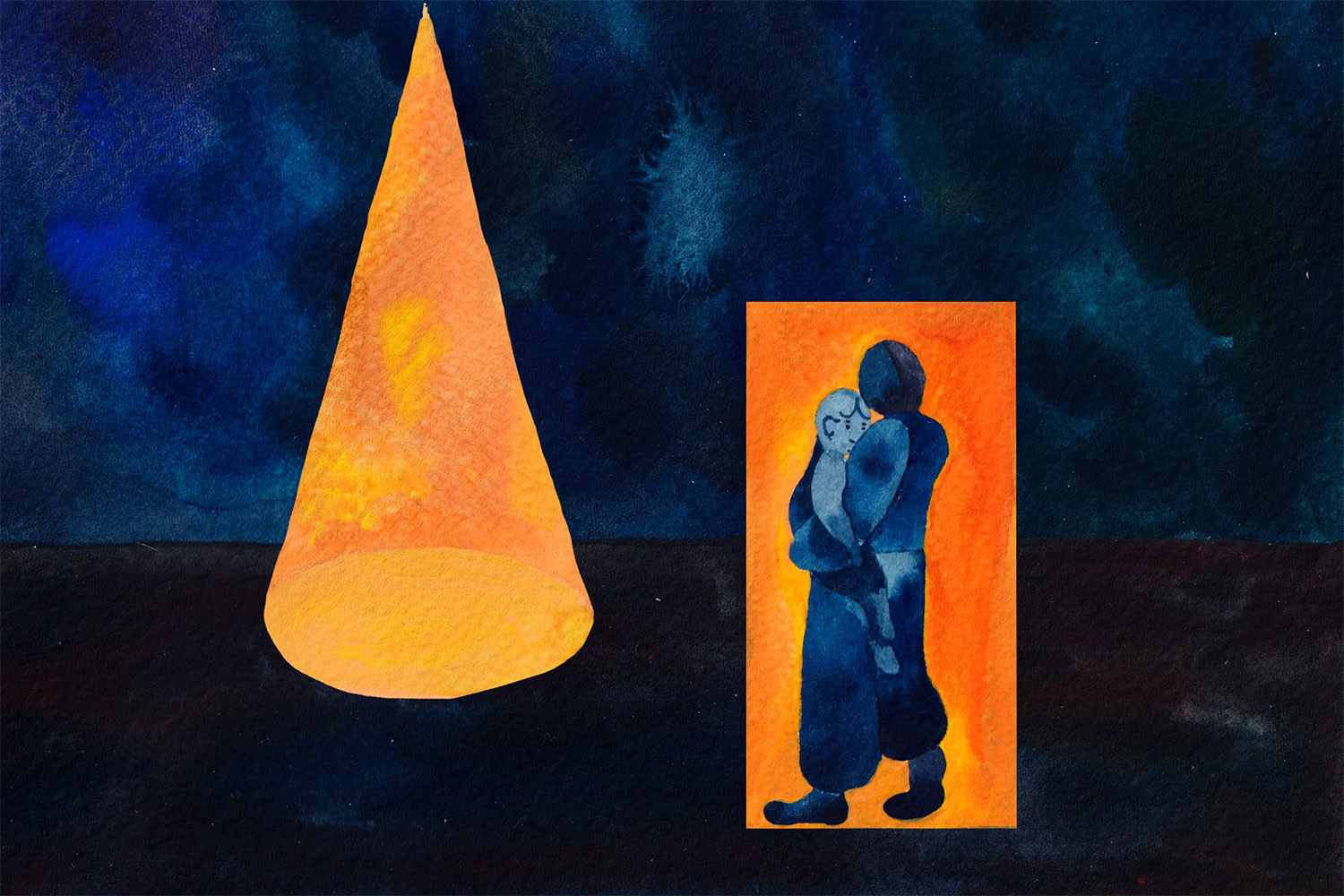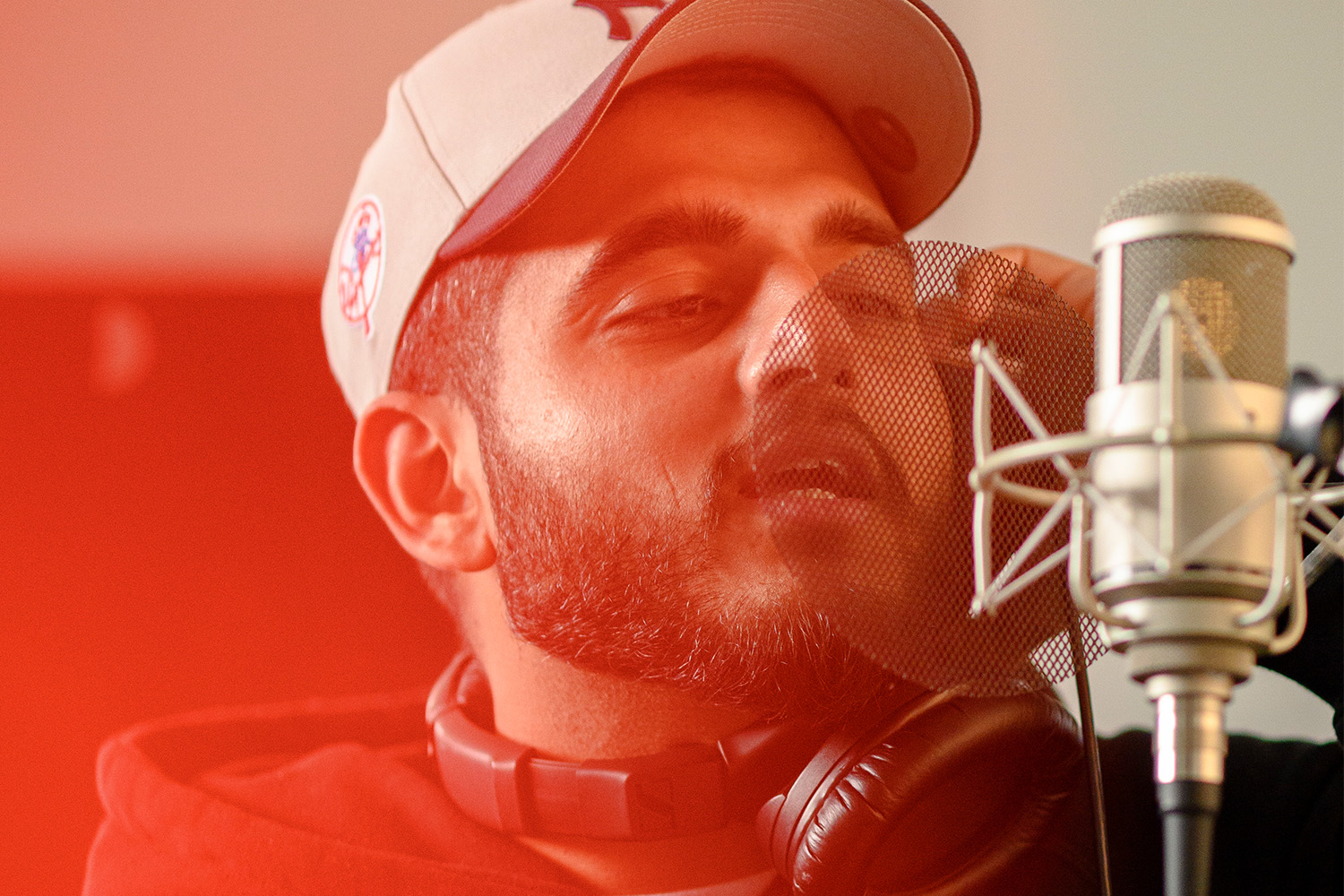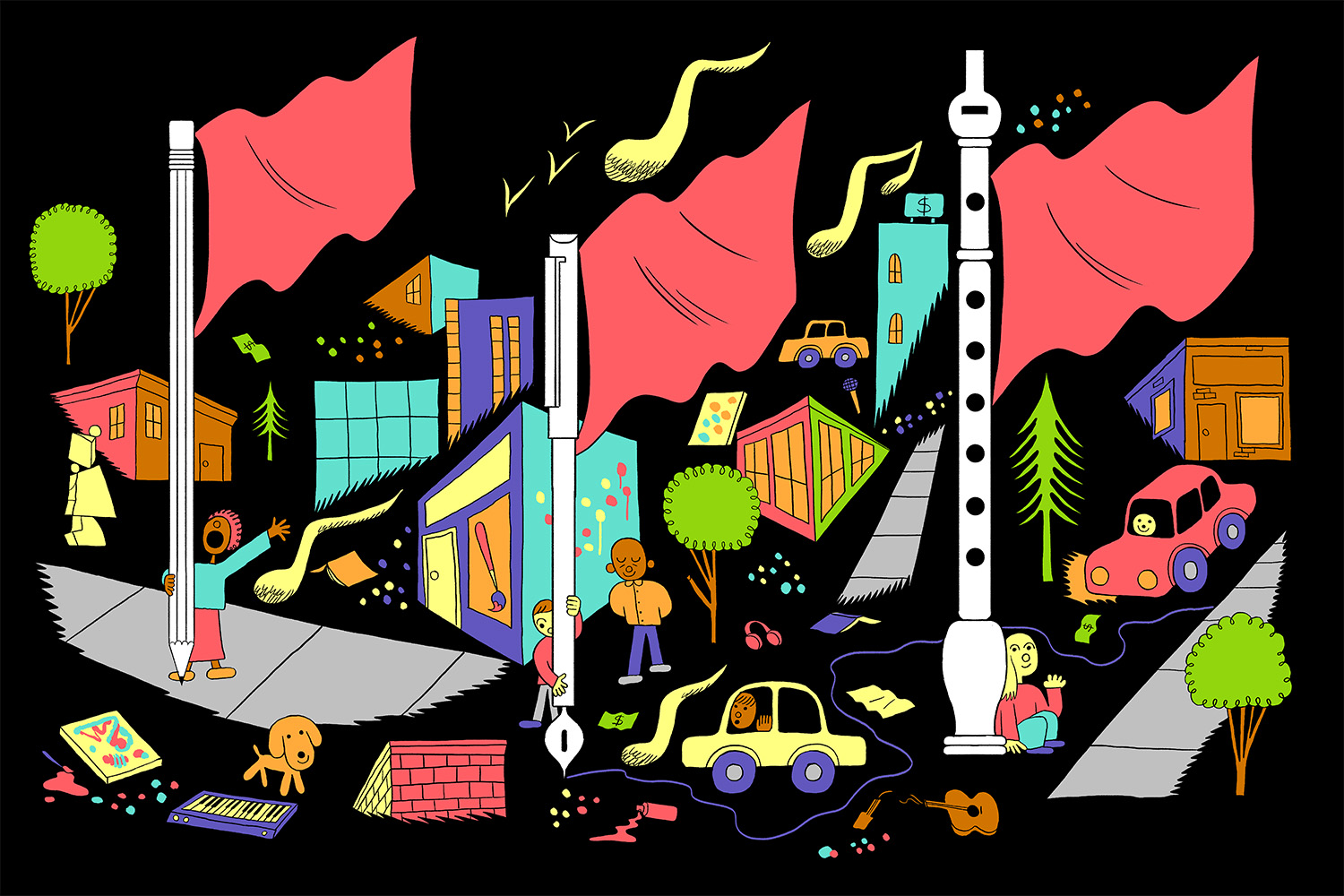
When I was let go in November 2022—effective immediately, I was told over a three-minute video call I took sitting at the only table in my studio apartment—what washed over me wasn’t panic, but relief. Due to “restructuring” of the theatre company where I worked, my position had been terminated. The truth is I was burnt out, and this news was a balm.
I’ve worked in arts and entertainment since 2018, jumping from contract to contract while freelancing on the side, cobbling together enough of an income to scrape by in Toronto. After having worked for a national media corporation and a local film agency, both of which substituted low wages with glitz, glamour, and prestige, I’d jumped at the chance to work at a local theatre that seemed to put people over product.
But within weeks, a near-constant pressure began to build in the pit of my stomach. I often operated as a one-person agency, responsible for everything from social media to public relations. It wasn’t just me; everyone’s workload at the organization was untenable, and the impacts on our mental and physical health were debilitating.
As I got to know arts workers at other companies, I realized it wasn’t even just us. All too often, non-profits operating on shoestring budgets hire too few people to do too much work while paying as little as they can get away with, causing arts workers to be priced out of the communities they serve. Something had to change. One brisk winter evening the year before I got laid off, two coworkers and I went for a drink at a Queen West bar to do more than just complain—we wanted to organize.
To be an arts worker has become an exercise in navigating precarity, constantly defending the validity and value of our work.
We resolved to reach out to other staff members to gauge their interest in drafting a collective set of demands to present to the artistic leadership. Despite being a close-knit team, in which most struggled to make ends meet while working more than full-time hours, building solidarity was an uphill battle. Responses ran the gamut from apathy to anxiety, and when the workload overwhelmed us again, everything fell apart.
Concerns about the economics of making art usually focus on how the disappearance of funding and space impacts artists, but the scale of this existential threat grows when we consider the ways artists’ livelihoods are tied to those of other arts workers like producers, box-office staff, technicians, and custodians. Most people are drawn to work in the non-profit arts sector by a deep sense of duty: they fall somewhere on the continuum of being invested in community and passionate about art. Many of the sector’s administrators are talented artists in their own right, taking on other forms of work to help support their craft while remaining an active part of the industry.
But to be an arts worker has become an exercise in navigating precarity, constantly defending the validity and value of our work. Nearly 70 percent of Toronto’s arts workers make less than $43,000 annually, and most rely on short-term gigs with few labour protections and no health benefits. We work more hours for less money, shouldering the work of entire departments for years before flaming out. Art is only made more compelling when all the workers who facilitate its creation have the freedom of financial stability and the means to advocate for themselves in the workplace. When thoughtful workers are siphoned from the artistic process by force or neglect, organizations and the art they produce become less vibrant, less diverse and reflective of the city around them, and risk falling out of step with audiences—something Toronto’s non-profit arts venues cannot afford to do if they want to recover from their post-lockdown slump. Unless arts workers collaborate to imagine a worker-led alternative, the sector is destined to exploit the systems art exists to subvert; it’ll not only become a shell of its former self, but cease to have utility beyond its return on investment.
Art + Money
Subscribe to our free newsletter to get our stories delivered directly to your inbox.
"*" indicates required fields
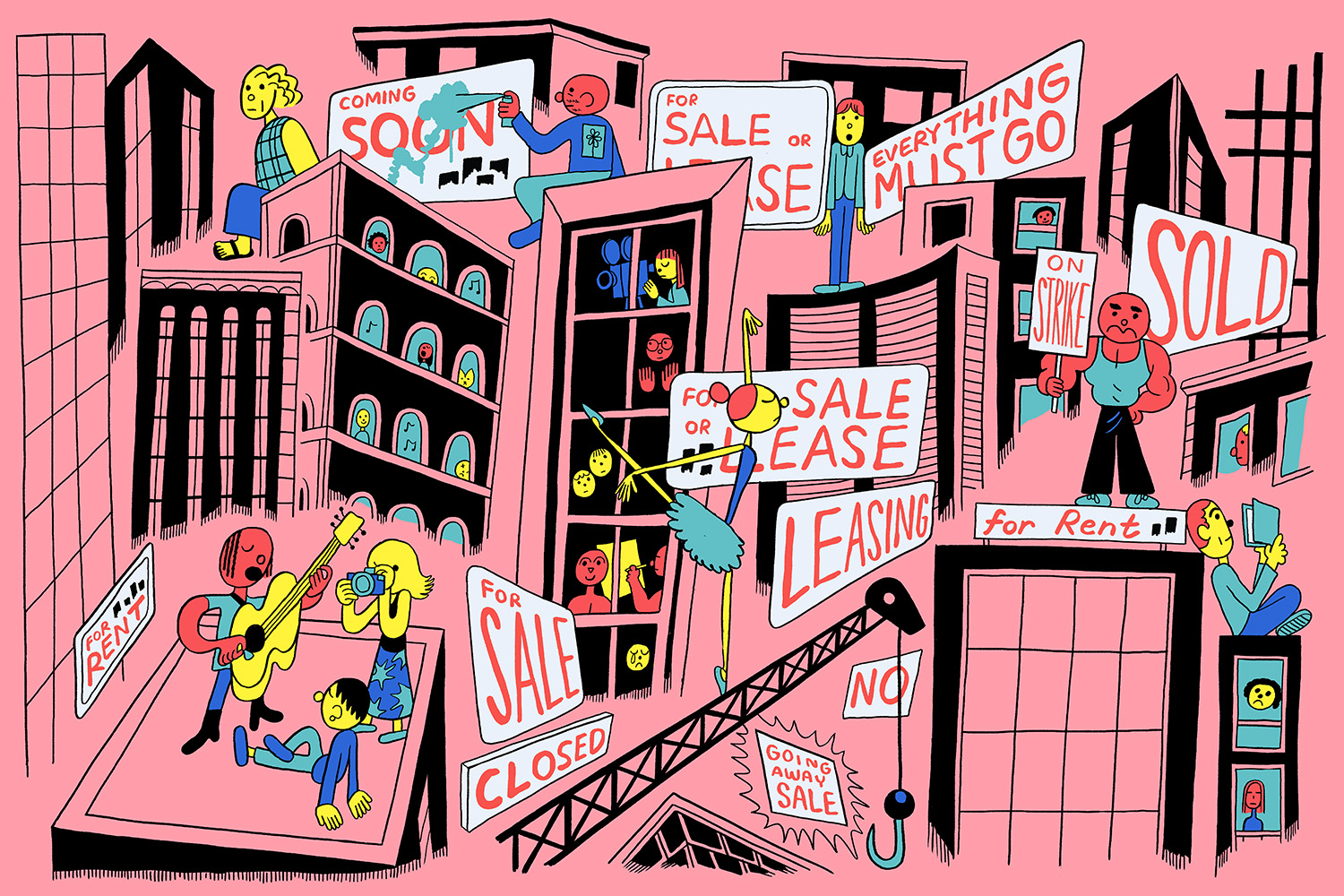
This labour crisis touches most industries, but it’s reflected uniquely in the arts because of the way our work has been devalued. There’s a pervasive sentiment that art is a hobby or side hustle until people reach the top echelons of success. Even in rare organizations within the non-profit arts sector where leadership recognizes the importance of nurturing artists, that practice rarely extends to staff who help facilitate artists’ work. But without smaller community art organizations, some of the city’s favourite local artists, like internationally-renowned musician and visual artist Lido Pimienta or Bilal Baig, the Scarborough-born co-creator of the award-winning CBC comedy Sort Of, might not have been able to access the time, guidance, and space necessary to experiment and hone their craft. And without arts workers, those spaces could not function.
“To be an installer at the AGO used to be an amazing thing,” said Meagan Christou, who at 33 is the Art Gallery of Ontario’s youngest installer. Art installers play a key role in bringing exhibitions to life, preparing the gallery to the artist or curator’s specifications. They’re jacks-of-all-trades, skilled in painting, design, carpentry, and art handling. After graduating from art school eight years ago, Christou was drawn to the profession because of its resemblance to her blue-collar upbringing working agriculture in rural Ontario.
Once upon a time, “you could have a full-time job, buy a house, and raise a family,” she says. Today, full-time opportunities are difficult to come by and like many working in the arts, most installers under 40 work occasional part-time contracts. “I work with people in their 70s—their wage hasn’t increased in a decade,” Christou explained. She regularly subs in for coworkers asked to complete tasks their bodies can no longer physically handle, who are afraid to say no. “Wear and tear on your body is never considered in a wage.”
As the cost of basic necessities continues to rise, it has become unfeasible for many arts workers from working-class backgrounds—many of whom are racialized, disabled, trans, or otherwise marginalized—to justify these precarious roles. When working-class people are pushed out of art spaces, it leaves only those with generational or personal wealth to fill the roles, because they’re the only ones who can afford to subsidize the cost of their own employment.
On March 26, eight months after I initially spoke with Christou and 10 months after the Ontario Public Service Employees Union Local 535 began negotiating with the AGO, she and more than 400 colleagues went on strike for the first time in the gallery’s 124-year history, over precarious contracts and inadequate wage increases. “It’s been 10 months of being stonewalled,” union president JP Hornick proclaimed to a crowd of picketers several days before the strike vote. When I caught up with Christou three weeks into the strike, she cited a clause seeking protections for part-time workers, who make up 60 percent of the union local’s membership, as a major point of contention. The union warned that the AGO’s push for part-time and contracted labour has created an “underclass of struggling workers.” Management receives annual bonuses and executives boast salaries between $150,000 and $400,000, while the majority of part-time workers can barely keep up with the cost of living.
Workers have been picketing six days a week in sleet or shine with no loss in momentum. They’ve been joined by politicians, neighbours, AGO members, and fellow workers from the arts, healthcare, education, and countless other sectors. Cars and trucks passing along Dundas Street honk so loudly and so vigorously at times they drown out the rally speakers. Christou said showing up to the picket line alongside coworkers across departments—most of whom she’s never met—has been empowering. “We hate the job, but we love the work. That’s why we fight.”
If the artistic landscape of a city is controlled exclusively by the wealthy, it shapes which voices and subjects are platformed, and ultimately who feels welcome in art spaces, both as a creator and an audience member. It perpetuates the myth that art is a luxury reserved for the rich rather than a tool of expression and connection. Arts organizations exist to serve their communities and need to be as diverse as the neighbourhoods they operate in.
Art historian Julia Bryan-Wilson traced the root of the term “art worker” as it’s understood today to the late 1960s, emerging from an international movement of artists who declared artmaking real work worthy of compensation. The era, marked by social upheaval and a shared sense of financial uncertainty, emphasized the creation and facilitation of art as a political act. Associations like the short-lived Art Workers’ Coalition organized protests and strikes for artists’ rights and quickly broadened their scope to participate in mass mobilizations against racism, fascism, sexism, repression, and the Vietnam War. They set up alliances modelled on trade unions and collectively stood against large art institutions to advocate for better working conditions.
Similar kinds of unions exist in industries that intersect with the community arts world, like film workers, actors, or public sector workers, but Canadian non-profits are almost entirely non-unionized. “In the non-profit world, there’s this idea that you’re a good person so you should put up with the worst,” said Rachel Butler, board member at CARFAC National, an association responsible for recommending labour standards for visual artists. Butler has worked at multiple arts institutions, including, before the pandemic, a stately museum in North York, where she was part of a staff group chat that would discuss institutional issues and organize voluntary collective responses.
In 2019, she and some colleagues who were very active in the group chat were let go on the same day. Butler says she wasn’t given a reason, and later found out someone had reported her. “It was like union-busting without an actual union.” Terminating employees for attempting to unionize is a violation of Ontario labour law, but without proof of an expressed desire to form a union, it’s a difficult accusation to prove.
Niklas Agarwal, former manager at non-profit arts organization Artscape, says he was terminated from his role in July 2023 with half a dozen other staff, months before the organization announced a mass layoff and intention of entering into receivership. While the company cited financial strain as the cause at the time, Agarwal was also involved in organizing Artscape Workers United, bringing together colleagues across departments with the hope of unionization. Some of his coworkers made as little as $17 per hour. (Artscape is currently in receivership and, having no employees, could not respond.)
While Agarwal acknowledged the vast discrepancy between his salary as a manager and the hourly wages of custodial staff, he stressed that the work culture was detrimental to many, regardless of their role. Most former coworkers didn’t make it past the 18-month mark. Despite the tension, Agarwal said producing public art programming was a dream job. “We loved our coworkers and wanted to make it a better place. For so many of us, a union was the difference between a living wage and poverty.”
Artscape provided desperately needed services to Toronto’s artistic community at the expense of its employees’ well-being—this is the dichotomy of many non-profits. I’ve worked with passionate and thoughtful artistic directors I deeply respect, but they’re often asked to carry out the difficult task of conceptualizing, producing, and presenting a consistent stream of public programming on meagre budgets.
“We hate the job, but we love the work. That’s why we fight.”
In 2022, Toronto Arts Council (TAC) reported 44 percent of organizations they granted money to were operating at a deficit, and the size of those total deficits have more than tripled since 2019. Directors’ priorities are stretched in several directions simultaneously; obligations to boards and funders divorce them from the daily lives of artists, staff, and community members. Local arts organizations were not originally created to resemble corporations, but access to operational funding requires them to function as such.
The vibrance of Toronto’s community arts sector can, in part, be attributed to an annual pool of public funds—like grants from the Canada Council for the Arts, created in the 1950s with an eye for building a distinct national identity—which is still an important source of income for non-profits. The city’s annual budget allocated towards the cultural sector (the arts, film and entertainment industries, and museums and heritage combined) reached a peak of $25 per capita in 2017, an amount they’d struggled to reach since 2003 when the target was set. Despite her campaign promise to inject additional funds into the cultural sector this year, Mayor Olivia Chow did not propose an increase in funding for TAC whose budget, largely stagnant since 2017, has plummeted when adjusted for inflation.
Though the vast majority of Torontonians still see value in community art and support its public funding, this sentiment isn’t reflected in government priorities. Ahead of the 2024 federal budget proposal, the Canada Council for the Arts reported stagnant budgets and a growing demand for funding, as did the Toronto and Ontario Arts Councils. This year, the City of Toronto doled out over $1 billion to the Toronto Police Service, dwarfing an arts budget of $52 million. Politicians regularly show up at flashy cultural events because they understand the power of art; they use proximity to the arts to launder their reputations while defunding social services that create the conditions that make arts work possible.
Toronto’s non-profit arts sector is in crisis, and it’s a crisis of policy. “A lot of non-profit executives are trying to stretch a dollar because funding depends on it,” explained artist and arts administrator Sedina Fiati. When non-profits are unwilling to cut back on programming at the risk of losing out on even more funding, it’s the artists and staff who suffer. 32,000 artists and arts workers—more than 40 percent of Canada’s artistic population—live in Toronto, but a 2019 study reported 73 percent have considered leaving. As many organizations struggle to bounce back from COVID-19 lockdowns, I wouldn’t be surprised if this number was higher today.
At its best, community art helps build strong connections by providing spaces to converse, play, learn, rest, and flex our imagination by engaging with someone else’s. It allows everyday people to participate in artmaking, weaving our stories into the fabric of the city. What would Toronto look like without art? What would it look like without the workers who facilitate the creation of art?
If we want to avoid the death knell of turning Toronto into a bland city overrun by corporate highrises and retail chains, we need to work together to ensure the survival of community arts—to do that, we must recognize arts work as real work worthy of living wages, labour protections, and worker representation. “If we’re part of setting the standard, we can be part of shifting it to something better,” said Fiati. “We need to reconsider how we think about work and what’s important. Once that happens, anything is possible.”
Correction—November 4, 2024: This article has been amended following privacy concerns from arts workers who had previously attempted to organize within their workplace.
Correction—April 17, 2024: This article has been amended to clarify the circumstances regarding Niklas Agarwal’s termination from Artscape.
Our Art + Money issue was made possible, in part, through the generous support of Toronto Arts Council. All stories were produced independently by The Local.

